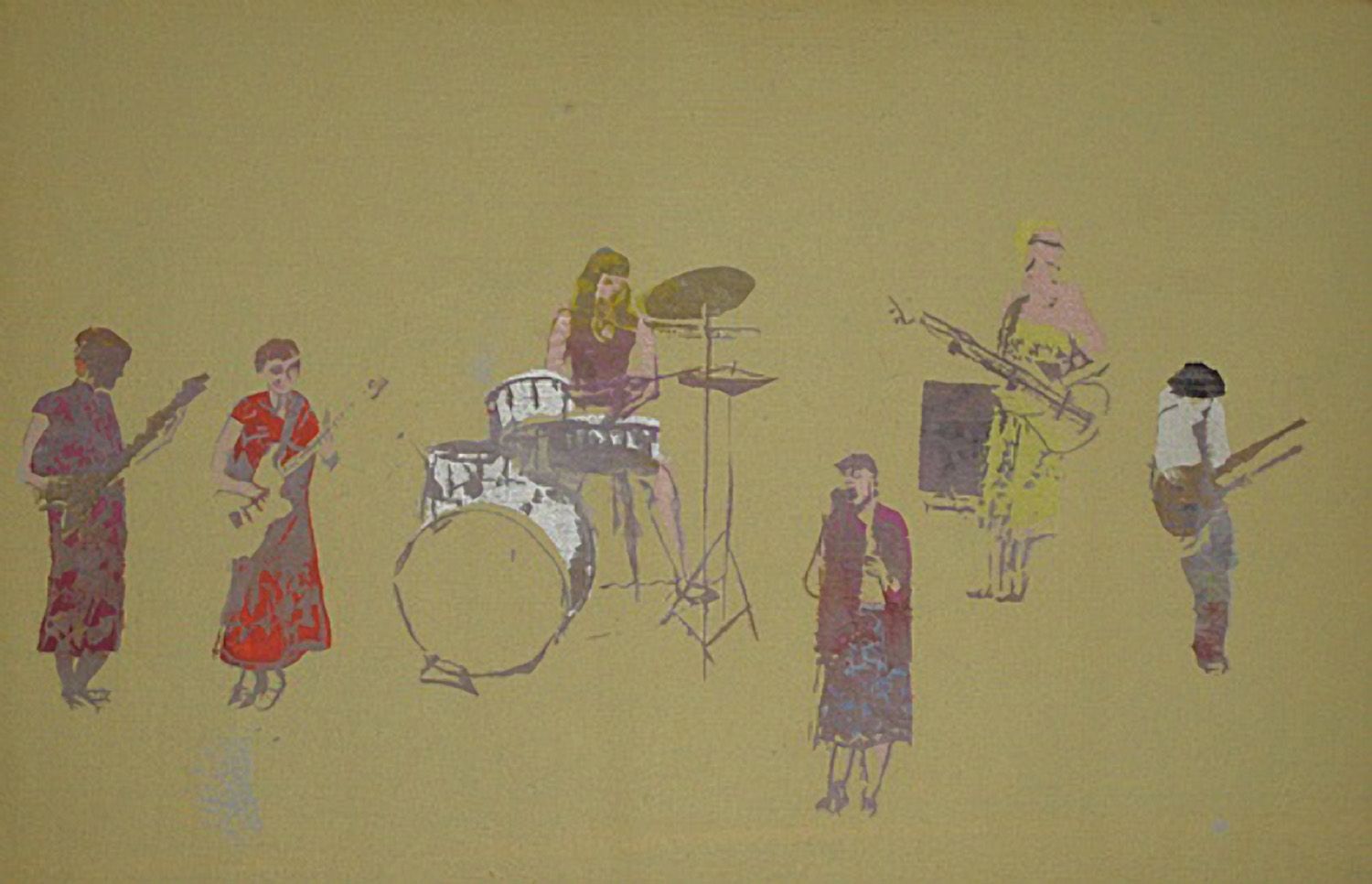Tim Johnson
The Electric Fans, c. 1980
acrylic on canvas
27.5
x 43.5
cm
signed and titled (on the reverse)
SOLD
Provenance
The artist
Private collection, Sydney
Tim Johnson's painting 'The Electric Fans', circa 1980, is a portrait of an obscure underground music act of the same name. The painting is part of a concentrated series of works that the celebrated Australian artist made between 1979 and 1983, which also featured bands like Radio Birdman and The Sex Pistols. While deeply interested in both the audio and visual culture of the punk and rock movements, it was their unique ideologies and fierce spirit of independence that the conceptual artist was drawn to. In 'The Electric Fan', the band’s portrait is rendered in a crude, expressionistic style. Here, Johnson characteristically flattens the illusion of depth in the picture, dissolving the image into a field of colour. It's as though the punk rock pin-ups have intruded into the space of Modernism, the pure field of colour corrupted by the presence of popular culture.

‘…one has to work in a symbolic space, perhaps like the Buddhist Pure Land, or the mandala itself, to create an illusory reality or a virtual reality in which the space that the artwork occupies is revealed to the audience that can read enough signs to unravel its meanings.’ (Tim Johnson, quoted in Wayne Tunnicliffe, ‘Pure Land Painting’ in Tim Johnson: Painting Ideas, Art Gallery of New South Wales, Sydney, p. 58.)
Tim Johnson’s paintings are fascinating cross-cultural documents that embody the inherent multiculturalism within contemporary society. Born and trained in Sydney, Johnson began as a conceptual and performance artist, establishing the Inhibodress art space in Sydney along with Mike Parr and Peter Kennedy. In 1975-76, Johnson travelled to North and South-East Asia, where Buddhist spirituality and culture left an indelible impression.
Johnson first travelled to Papunya, Northern Territory, in 1980, where he learned dot painting with Aboriginal artists including Clifford Possum Tjapaltjarri. After seeking permission to continue incorporating indigenous techniques within his paintings, Johnson developed a visual vocabulary that placed the vibrancy of the dot alongside symbols and icons of Asian religion and folklore. The resultant paintings are spiritual landscapes, testaments to Johnson’s connections to different aesthetic traditions around the world. He and his then-wife, the writer and sociologist Vivien Johnson, were instrumental in introducing these Central Australian artists to the art market and increasing the Australian public's awareness and appreciation of First Nations art and culture.
More recently, his contemplation of mythology has led Johnson to popular culture, with symbols from science fiction, video games and Japanese anime being incorporated alongside traditional images of the Buddha or the lotus flower. The common feature of these disparate influences is the sense that there is a shared consciousness of images and symbols from all cultures that makes sense to audiences from all backgrounds.
Tim Johnson has worked and exhibited for almost five decades, both alone and collaboratively with the likes of Karma Phuntsok, My Le Thi and Clifford Possum Tjapaltjarri. In 2009-10, a major solo exhibition, Tim Johnson: Painting Ideas toured the Gallery of Modern Art, Brisbane, the Art Gallery of New South Wales, Sydney, and the Ian Potter Museum of Art, Melbourne. He showed in 2012 at The Unseen, the Fourth Guangzhou Triennial, China, and has been included in three Biennales of Sydney.